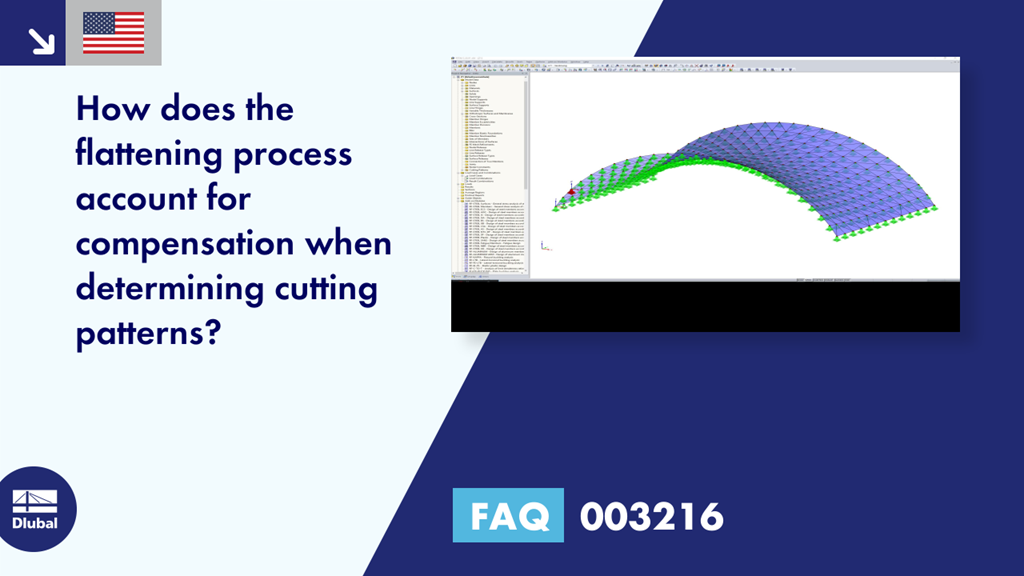Question:
How does the flattening process account for compensation when determining cutting patterns?
Answer:
The flattening process in the RF‑CUTTING‑PATTERN add-on module is an iterative process that flattens the respective cutting areas by minimizing the distortion energy while assuming an assigned material behavior.
In simplified terms, the method compresses the initial geometry in a press assuming a frictionless contact until the stresses due to flattening are in equilibrium with each other.
→ See the video
Since this process covers the complete mechanics of the curved structural component, it is possible to additionally consider the compensation directly as an applied strain load.
Since the strains from the compensation specification interact with the strains from the flattening in the algorithm of RF‑CUTTING‑PATTERN, this kind of compensation consideration cannot be compared with the usual, flat scaling of the non-compensated cutting patterns. The consideration of the complete "cutting pattern mechanics" with all strain terms provides very high-quality geometry of the cutting pattern.
The integral flattening process determines a coordinate system (warp and weft direction) from the mean orientation of the FE elements prior to the flattening and uses the initially defined coordinate system to describe the compensation strain and stiffness independent of the respective position of the FE elements in space and their coordinate system orientation. Thus, the comparison shown in the video is only valid for an isotropic linear elastic membrane model.
